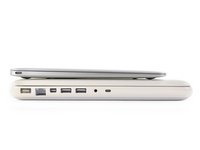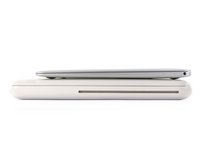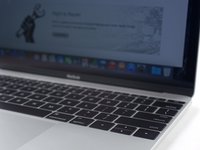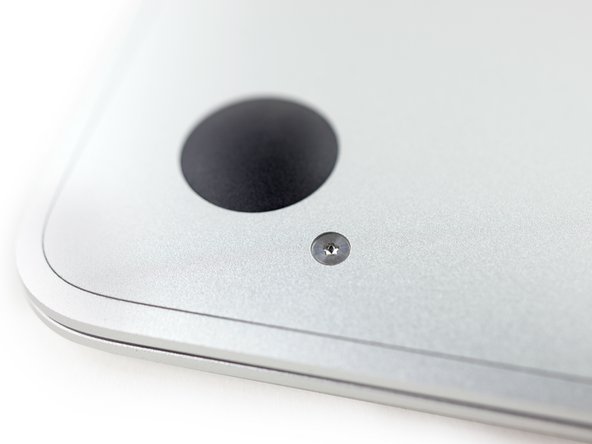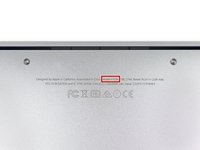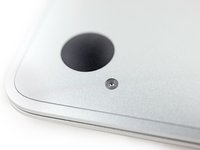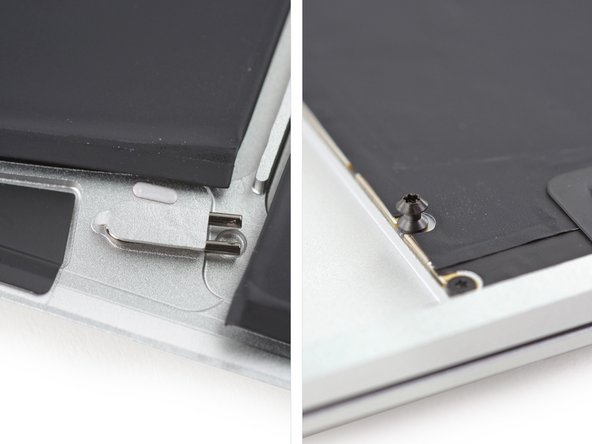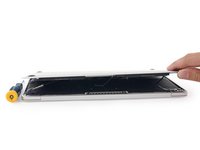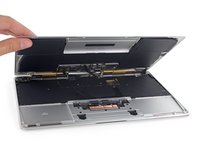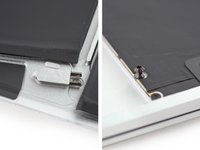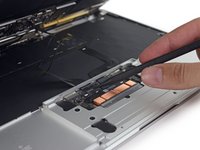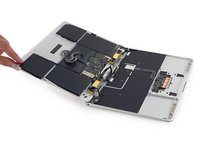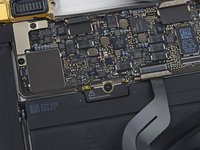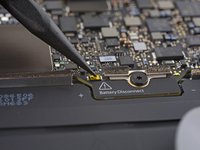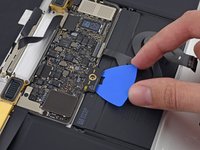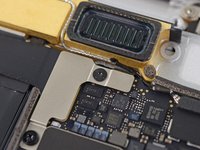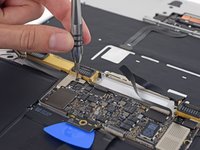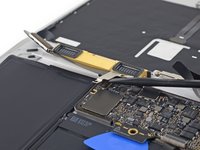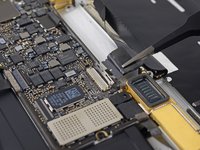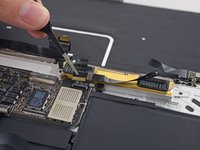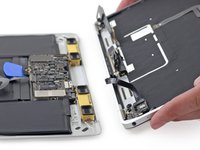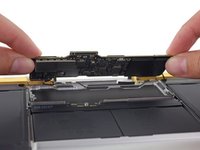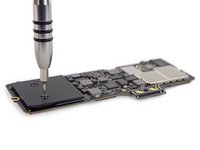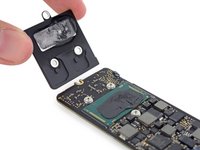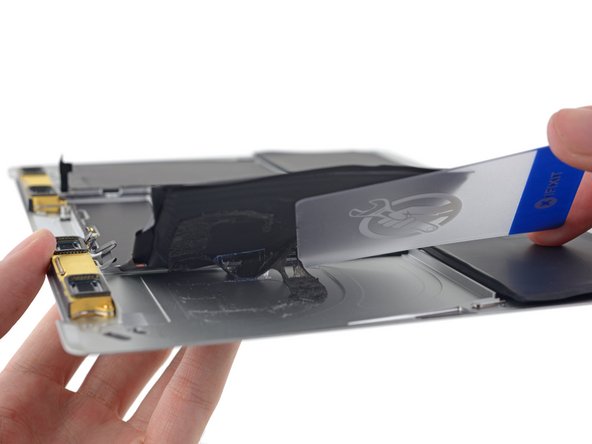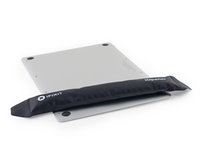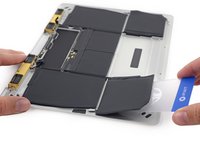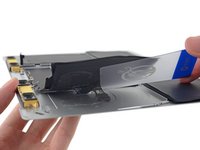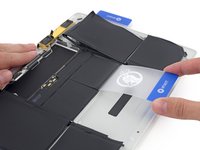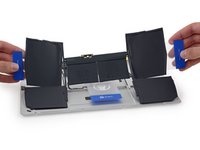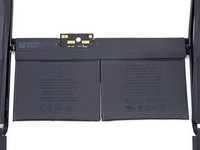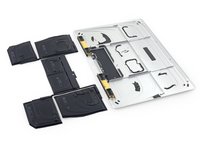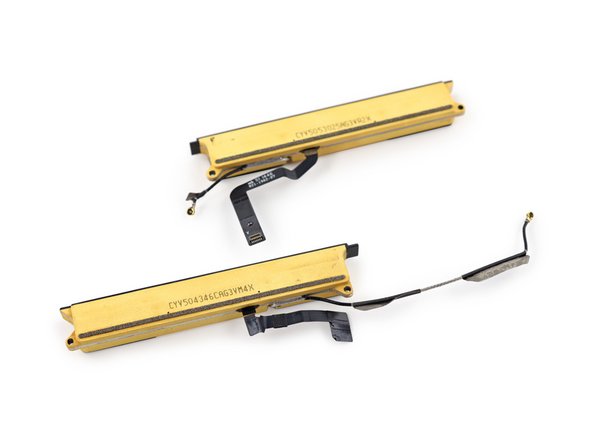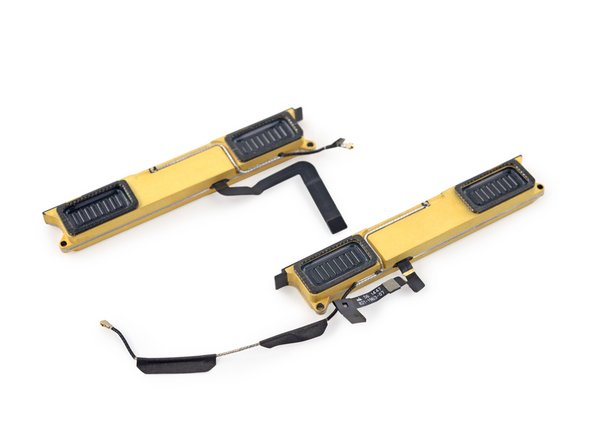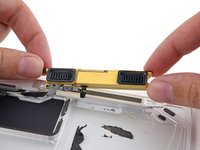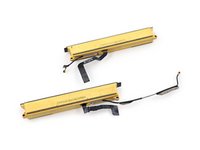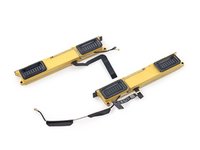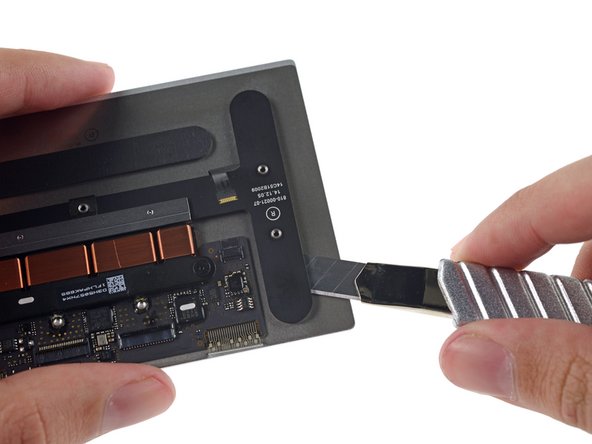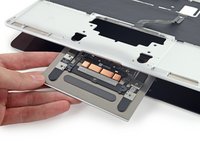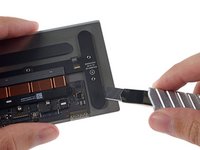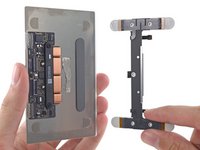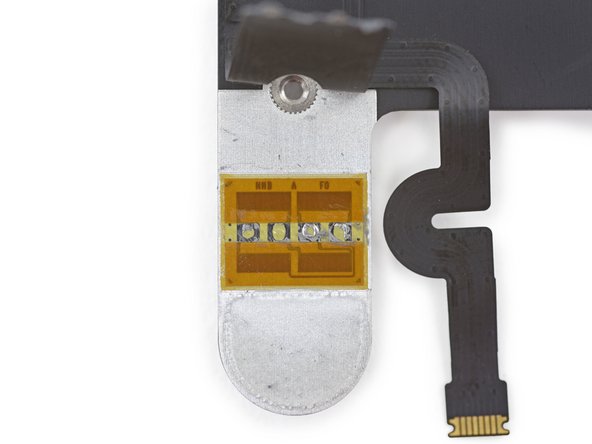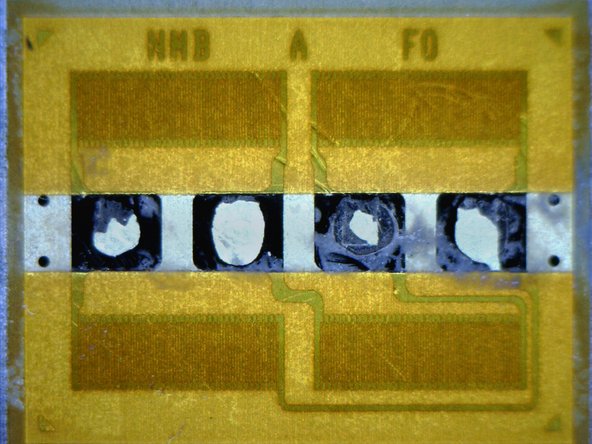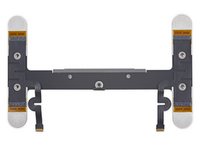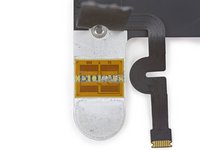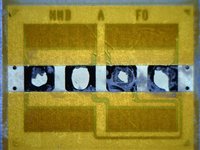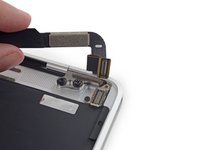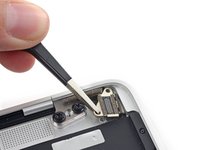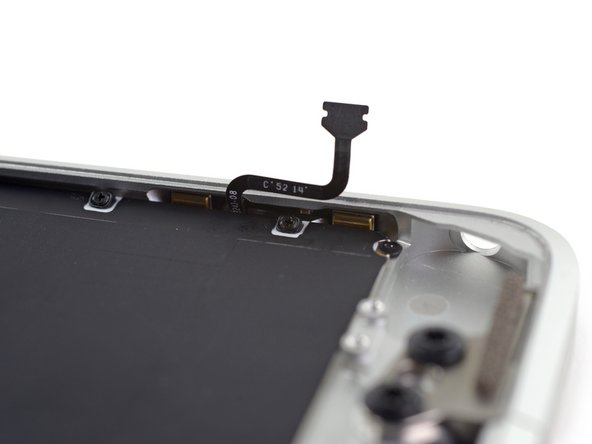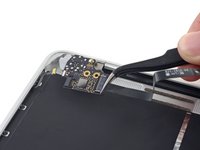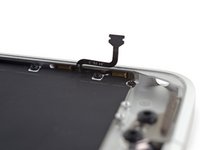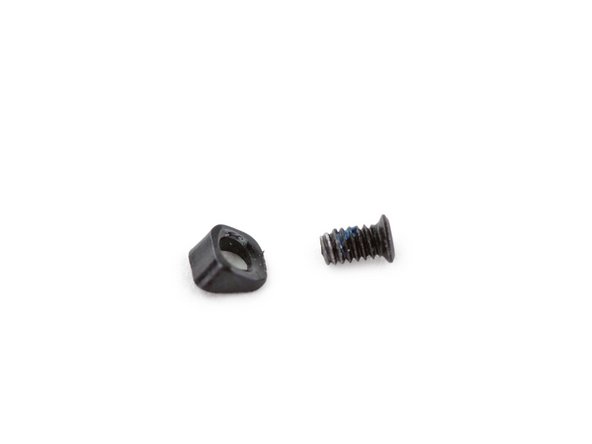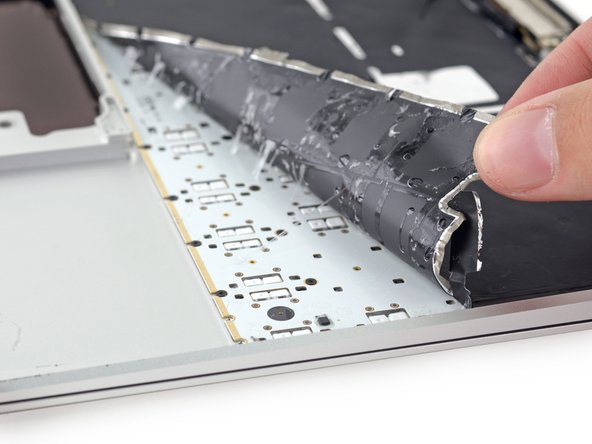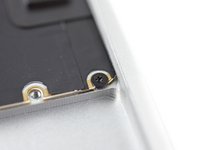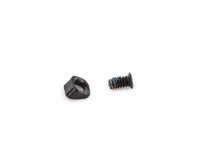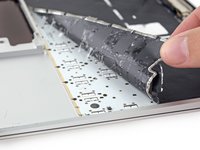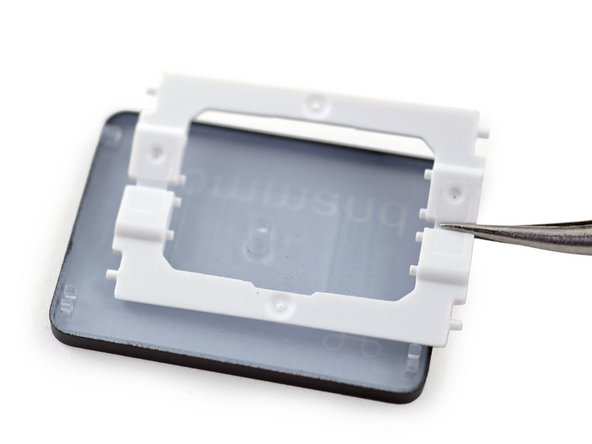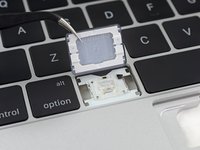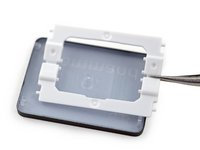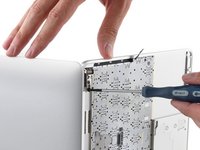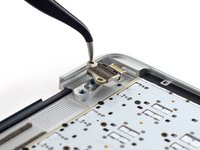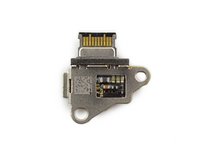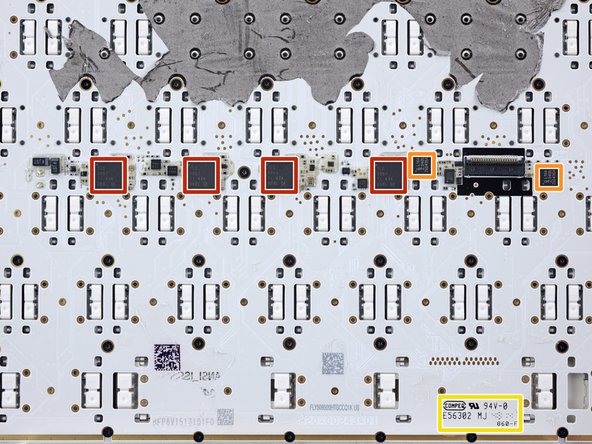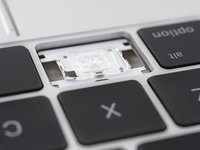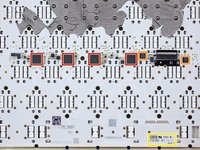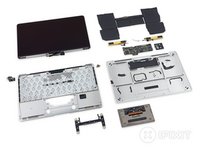crwdns2915892:0crwdne2915892:0
Apple describes its new Retina MacBook as "the future of the notebook." Its all-new design certainly has us intrigued. The whiff of aluminum in the air and the whisper of screws unwinding to reveal the mysteries within can only mean one thing: The teardown has begun. Join us as we expertly dismantle the Retina MacBook 2015.
Want to watch repair history unfold? Follow us on Instagram, Twitter, and Facebook!
crwdns2942213:0crwdne2942213:0
crwdns2936621:0crwdne2936621:0
-
-
Since it was announced on March 9th, we've been eager to get our hands on the sleek new MacBook. Before we tear inside this beauty, we take a glance at its specs:
-
12-inch, 2304-by-1440 pixel (~226 ppi) IPS "Retina" display
-
1.1 GHz or 1.2 GHz dual-core Intel Core M processor (optional 1.3 GHz processor available)
-
8 GB of 1600 MHz LPDDR3 memory
-
256 GB or 512 GB flash storage
-
Intel HD Graphics 5300
-
Single USB-C port
-
-
-
While we want to commend Apple for adopting the new USB Type-C standard, they've done so in a way that makes it impossible to use old adapters on new devices. The MagSafe and Thunderbolt ports of old are gone. The new MacBook has one USB-C to rule them all.
-
For comparison's sake:
-
10-watt iPad USB adapter (left)
-
29-watt USB-C power adapter included with the MacBook (middle)
-
60-watt MacBook Air Magsafe 2 (right)
-
Hopefully users will benefit from the standardization, and not trip over their cables too often.
-
-
-
The new MacBook is less than half the thickness of its 2009 ancestor, measuring 0.52 inches at its thickest point.
-
At 1.08" thick, the 5 pounds of polycarbonate-swathed 2009 MacBook dwarfs our 2.03 pound Retina MacBook.
-
Apple probably shaved off a lot of that weight in removing ports. Back in 2009 we had MagSafe, ethernet, Mini DisplayPort, 2x USB, audio, and a security slot.
-
We'd also remind you to say goodbye to your optical drive, but that ship has pretty much sailed.
-
-
-
Those are pretty short keys. Bursting from its cocoon is Apple's newly-designed keyboard, equipped with a butterfly mechanism. Let's see if this keyboard will go twice as high as the traditional scissor-switch mechanism.
-
We zoom in on the Retina display, described by Apple as the thinnest, most energy-efficient Retina display ever on a Mac. The pixels themselves have a larger aperture, enabling more light to come through, resulting in greater energy efficiency without compromising brightness.
-
-
-
We make a quick note of the newly-minted model number—A1534—before moving forward.
-
This may be the future of laptops, but Apple has stuck to their tradition of using tamperproof 5-point pentalobe screws for the new MacBook. Le sigh.
-
-
-
Time to rip off that boring, plain ol' aluminum lower case, and get to the good—
-
What is this new devilry? Cables!? A battery and logic board in the lower case?
-
The standard pop-open-at-the-hinge practice still holds, but then the cables go taut. Then you have to hinge the case back forward to access the connectors and open the case.
-
What is this, a mid-gen iPhone?
-
The standard plastic clips of old are replaced with futuristic pegs and weird spring clips.
-
-
-
Reminiscent of the Macbook Pro 13" Retina released in March, this MacBook comes equipped with the fancy Force Touch trackpad. We disconnect the trackpad/keyboard cable for a little more maneuvering room.
-
With the springy trackpad/keyboard cable disconnected, we can fold the whole enchilada flat on the table. Time to survey the field and see what we're up against this time.
-
-
crwdns2935267:0crwdne2935267:0Battery Blocker$3.99
-
Wait, this is a notebook, right? Where's the battery connector?
-
At a loss, we play with this little yellow button for a bit. Boop.
-
We've seen something like this before—in the iPad, Apple loves to hide the battery connector under the logic board. This is the first time we've seen it in a laptop, so it looks like it's time for...
-
Our newly-minted battery isolation pick turns out to be just the trick we need to keep the juice away from the logic board's spring contacts.
-
-
crwdns2935267:0crwdne2935267:0Flexible Extension$6.99
-
In our quest to begin the Great Cable Disconnect of 2015, we find a tri-wing screw!
-
We finally disconnect the 3-in-1 display/power/I/O port cable that runs to the MacBook's lone USB-C port.
-
It's funny because while there are three functions, there's only one port, and no I/O board.
-
-
-
We guessed that the thinnest Retina display ever would come with some other changes—but this is one weird display connector!
-
We tweeze away the "audio board" connector that ties in the headphone jack and dual microphones.
-
Finally, the two halves are free to fly. Now it's time to get to that logic board!
-
-
-
-
We carefully lift the lovely logic board from its aluminum nest.
-
Apple's use of the new Intel Core M processors allows for smaller form factors and fun little heat sink covers.
-
The heat sink is nicely machined to provide multiple points of contact on the logic board—perhaps even to cool the reverse side of the logic board a bit.
-
-
-
It's time to put the chips on the table! Let's see what this logic board has to offer:
-
Elpida/Micron FB164A1MA-GD-F 8 GB LPDDR3 Mobile RAM
-
Toshiba TH58TFT0DFKLAVF NB2953 128 GB MLC NAND Flash memory (+ 128 GB on the reverse side for a total of 256 GB)
-
NXP 11U37 microcontroller; 128 kB flash, 10kB SRAM
-
SMSC 1704-2 Temperature Sensor
-
Texas Instruments SN650811 (probably power converter related to SN6501)
-
-
-
Humming a logical tune, we peruse the back side of the most logical of boards:
-
Intel SR23G Core M-5Y31 CPU (Dual-Core, 1.1 GHz, Turbo Boost up to 2.4 GHz) with Intel HD Graphics 5300
-
SK Hynix H9TKNNN4GDMRRR-NGM 4 Gb (512 MB) LPDDR2-SDRAM
-
Toshiba TH58TFT0DFKLAVF 128 GB MLC NAND Flash
-
Elpida/Micron J4216EFBG-GNL-F DDR3 SDRAM
-
Broadcom BCM15700A2, appears to be a wireless networking chipset
-
Murata 339S0250 (Likely an iteration of the 339S02541 Wi-Fi module found in the iPad Air 2)
-
Texas Instruments/Stellaris LM4FS1EH SMC Controller (Replacement codename for TM4EA231)
-
-
-
In 2011, Apple acquired Anobit, an Israeli flash memory controller designer.
-
Four years later, it looks like they might now have something to show for it—thanks to Anandtech's report that the MacBook's SSD looked a little unusual in the system profiler, we took our heat gun to the SK Hynix SDRAM to see what was hiding underneath.
-
Where we expected to see something by Samsung or Toshiba, we found an unbranded chip with a very Apple-esque part number: 338S00055.
-
-
-
It was too much to hope that the battery would be secured with a few screws, MacBook Air-style. Time to break out the heat and the cards.
-
We had hoped this would have provided room for a few screws, or some of those fancy little clips we saw on the case. Apparently not.
-
iOpener on a lower case? This just feels weird...
-
Scrape, peel, scrape, peel. Look at all that nasty adhesive.
-
-
-
Ugh! Even the center cell of the battery is glued down, and we had hoped the sticky cells we found in the new 13" MacBook Pro wouldn't be a trend...
-
To complicate the procedure, the battery sits down in a well; the only safe place to pry is over this aluminum wall.
-
Well, it's finally out—in all its multi-segmented glory.
-
-
-
In order to power this slender gadget, Apple produced this form-fitting 7.55 V, 39.71 Wh, and 5263 mAh battery.
-
According to the specs, this is just a hair more than you get from this year's almost-pudgy-by-comparison, 5100 mAh MacBook Air 11"—though Apple touts equal battery performance of up to nine hours surfing the net, or ten hours of iTunes video playback.
-
-
-
We've struck gold! ...Or maybe just a dielectric coating on aluminum.
-
The
treasureantennas sit in channels routed into each speaker assembly.
-
-
-
Finally, we reach one of the most talked-about trackpads in town. As we could expect, the Force Touch trackpad in the Retina MacBook looks like a slimmer, daintier version of the one we found in the 13" MacBook Pro.
-
Once we cut away the bracket, we get a clear view of the Taptic Engine.
-
-
-
Only four strain gauges? Seems unlikely... Time to hunt around.
-
Ahah! Some strange rubbery glue was holding a cable over the second half of each strain gauge pair.
-
As we found previously in Apple's Force Touch, the strain gauges on this trackpad sense pressure from your fingers without really moving.
-
-
-
-
Another tri-wing bites the dust, and the USB-C port cable turns out to be an interconnect cable.
-
And the dang port is trapped by the display hinge! How rude.
-
We'll come back for you later, USB-C.
-
-
crwdns2935267:0crwdne2935267:0P2 Pentalobe Screwdriver iPhone$11.99
-
Well at least the audio assembly is modular, allowing easy removal of the audio jack board. But that means the dual microphones are left behind.
-
Behind the keyboard that is—curses!
-
Wait, are those screws? No rivets? We can actually get in? Nice!
-
To be fair, that screw you see in the corner is a pentalobe—a P2. That's an iPhone-sized screw. Apple doesn't really want to let us in.
-
-
-
Three pentalobes later...
-
...and 10 Phillips screws with weird sloping spacers, allowing them to secure the keyboard at an angle...
-
...and finally two screws that fit into the case clips (throwback to step 6).
-
We can't complain too much, I mean screws are better than adhesive—oh my goodness.
-
The adhesive backing (a kind of layered tape) is stuck to the keyboard, and barely holds together upon peeling.
-
Under the blanket of tape is a field of disheartening stars. Two pentalobes per key, plus a row at the top and bottom, for a total of 83, plus the three from before.
-
-
-
Daunted by the pentalobe-packed rear panel, we opt for frontal access. The keys pop off easily enough and seem to simply snap in place.
-
With very few moving parts inside, is it possible that this plastic butterfly mechanism might actually be a repair win?
-
The bracket is held in with tiny little clips; so cute.
-
-
-
Now to remove the display and get to that pesky multipurpose port!
-
Ahh, USB-C! This lil' guy combines charging, data transfer, and video output into a single port.
-
USB-C supports a top speed of 10 Gbps (this port maxes out at 5 Gbps), bi-directional 20V/5A power, and a reversible design aimed to solve all of your USB woes.
-
-
-
Apple has opted to transition from using a row of LEDs with a light guide panel, to installing individual LEDs beneath each key.
-
And behind those keys, we find:
-
An array of four Texas Instruments TLC5951 PWM LED Drivers
-
A pair of NXP PCAL6416A I/O Expanders
-
PCB maker Compeq reports increased revenues for March.
-
-
-
The MacBook 2015 Repairability Score: 1 out of 10 (10 is easiest to repair)
-
Proprietary pentalobe screws continue to make opening the device unnecessarily difficult, and new cable routing makes the procedure even trickier.
-
The USB-C port is secured by tri-wing screws, and buried under the display brackets, complicating replacement. Also, being the only port, it will experience more use and wear than a typical single-purpose port.
-
The battery assembly is entirely, and very solidly, glued into the lower case.
-
The Retina display is still a fused unit with no separate, protective glass. If the display needs replacing, it'll cost a pretty penny.
-
The processor, RAM, and flash memory are soldered to the logic board.
-
crwdns2947412:024crwdne2947412:0
Hello,
Have you checked the content of the power adapters?
Le commentaire. As you say, pentalobe is tamperproof, and surely most of us now have a screw driver set? About time we forgave Apple, and it's good for your merchandising business ;-)
Yeah I'm thinking the same… I vaguely got the point behind the complaints when iPhone 4 came out, but that is now five years ago, and I am sure that anyone trying to fix the MacBook has ordered some part for one of the *last five iPhone models* and gotten the pentalobe screwdriver with it, so… And then the tri-wing screws just get a quick mention, although tri-wing screwdrivers are far less common by now, which just isn't fair :D
About the battery in the lower case, I think it's a rather good idea (the MacBook Air way would have been better), you can just replace the bottom case. At least it's a compromise
I could not find - what sound chip is used inside?










